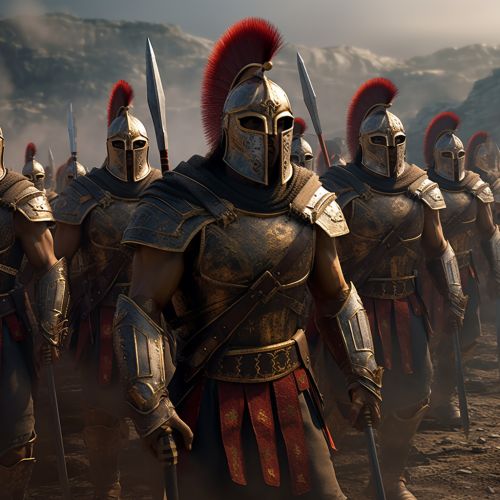Spartan warfare
Introduction
Spartan warfare is a topic of great interest in military history due to the unique culture and practices of the Spartan society. The Spartan military force was one of the most feared armies in the ancient world, and their soldiers were considered the best in battle.
Spartan Society and Military Structure
The Spartan society was highly militarized. Every male Spartan citizen was a soldier by default, and their entire society was organized around the needs of the military. The Spartan society was divided into three main classes: the Spartiates, the Perioeci, and the Helots.


Spartiates
The Spartiates were the ruling class of Sparta, and they were the only ones who could become full-time soldiers. They were trained from a young age in the agoge, a rigorous education and training program, to become the elite warriors of the Spartan army.
Perioeci
The Perioeci were the non-citizen inhabitants of Sparta. They were free men, but they did not have the same rights as the Spartiates. They were primarily merchants and craftsmen, and they provided the necessary goods and services for the Spartan society.
Helots
The Helots were the enslaved population of Sparta. They were owned by the state and assigned to work for the Spartiates. They were also used as light infantry and support troops in times of war.
Spartan Military Training
The Spartan military training, known as the agoge, was a brutal and rigorous program designed to produce the best warriors in the world. The training began at the age of seven and lasted until the age of thirty.
Physical Training
The physical training in the agoge was intense and often brutal. The boys were taught to endure hardship, pain, hunger, and cold. They were trained in running, jumping, wrestling, and discus and javelin throwing.
Combat Training
The combat training in the agoge was equally rigorous. The boys were taught to fight with the weapons and armor of a hoplite, a heavily armed foot soldier. They were trained in the use of the spear, the sword, and the shield.
Mental and Moral Training
The agoge also included mental and moral training. The boys were taught to obey orders, to endure hardship without complaint, and to put the needs of the group above their own. They were also taught reading, writing, and music, but these were considered less important than the military training.
Spartan Military Tactics
The Spartans were known for their discipline and their use of the phalanx formation in battle. The phalanx was a tight, rectangular formation of soldiers, with each soldier's shield protecting the man to his left.


Use of the Phalanx
The phalanx was the primary formation used by the Spartan army in battle. It was a tight, rectangular formation of soldiers, with each soldier's shield protecting the man to his left. The phalanx was a defensive formation, but it could also be used offensively.
Role of the Hoplite
The hoplite was the backbone of the Spartan army. He was a heavily armed foot soldier, equipped with a spear, a sword, and a large round shield. The hoplites were the ones who formed the phalanx, and they were the ones who did the majority of the fighting in battle.
Role of the Peltast
The peltast was a type of light infantryman in the Spartan army. He was armed with a pelta, a small shield, and a number of javelins. The peltasts were used to harass and disrupt the enemy's phalanx, and to provide support for the hoplites.
While the Spartans were primarily a land-based power, they also had a navy. The Spartan navy was not as strong or as well-known as the Athenian navy, but it played a crucial role in the Peloponnesian War.
Conclusion
The Spartan military was one of the most feared forces in the ancient world. Their unique society, rigorous training, and innovative tactics made them a formidable opponent on the battlefield.
